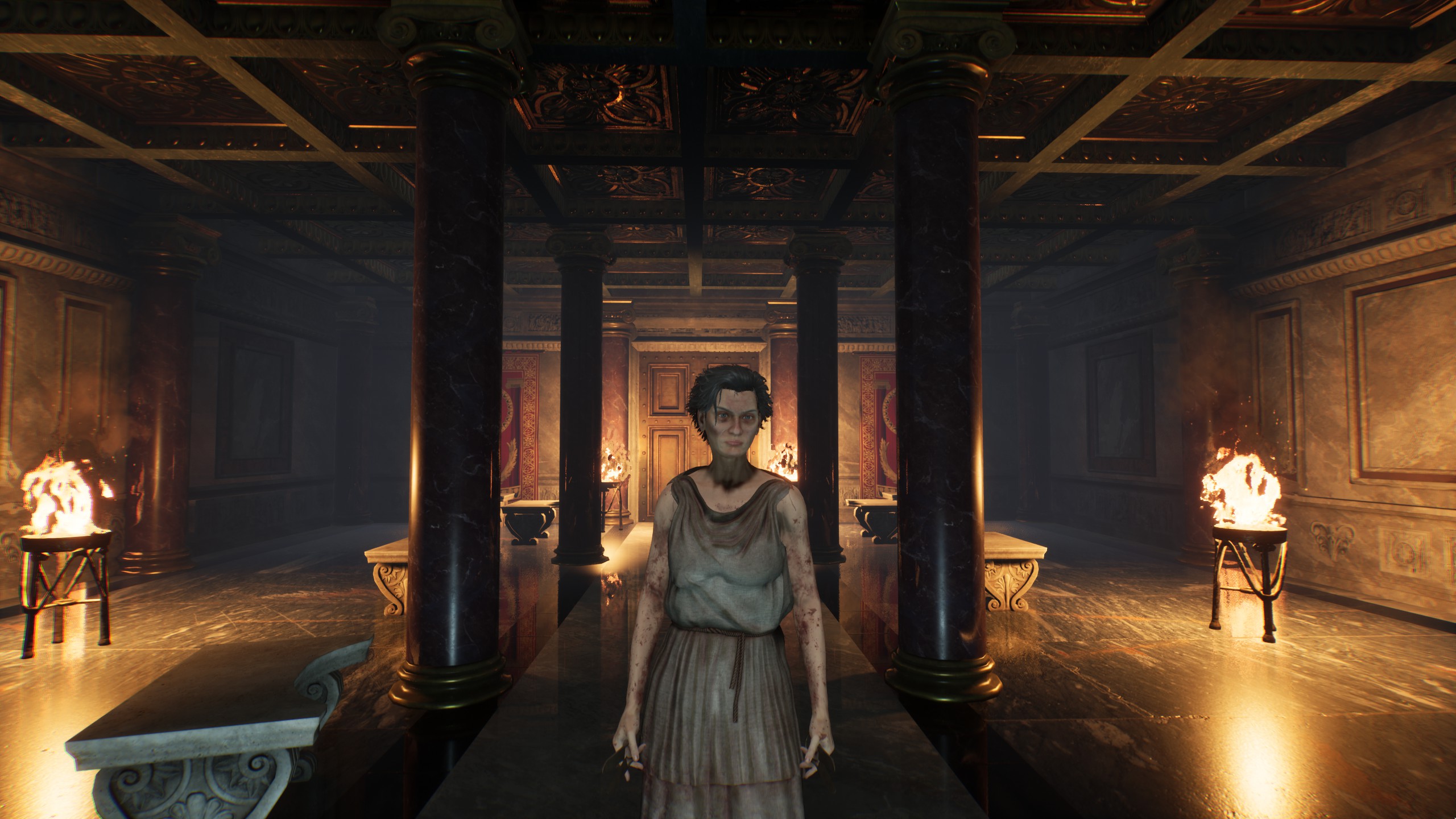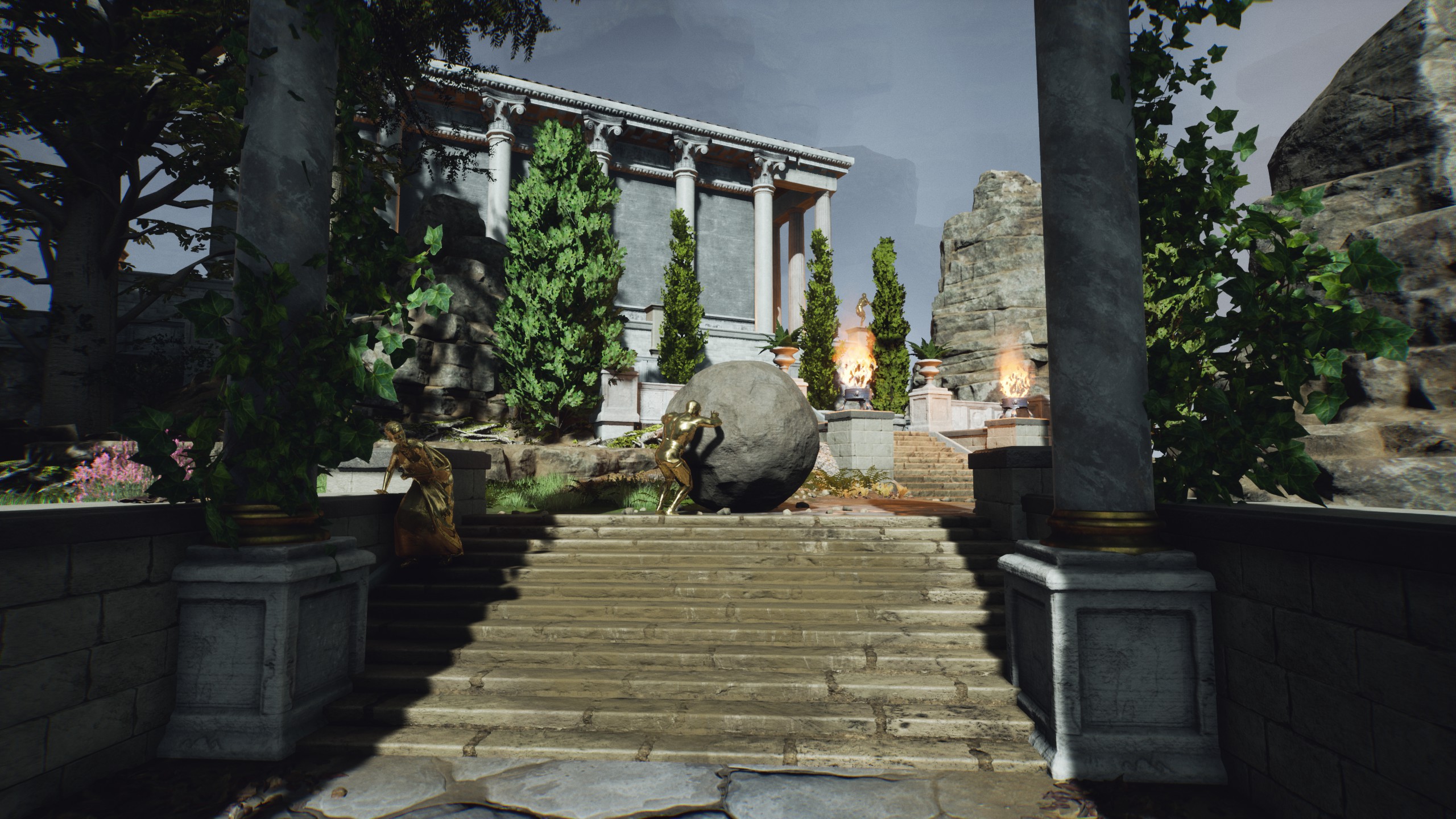There aren't enough games about history, but at least there's The Forgotten City

In addition to our main Game of the Year Awards 2021, each member of the PC Gamer team is shining a spotlight on a game they loved this year. We'll post new staff picks, alongside our main awards, throughout the rest of the month.
Strategy games love history, and thanks to first-person shooters every major war of the 20th century has been videogamed to hell and back. The Assassin's Creed games explore a kind of popcorn history with Hollywood versions of Leonardo da Vinci and the like, and the occasional RPG gets set somewhere in medieval Europe or feudal Japan. I'm not saying videogames about our past don't exist, but they sure are outnumbered by games about our present, games about our future, and games about elves.
Which is weird, right? I'm not here to ask why historical fiction has been a significant part of TV, movies, and books while remaining under-represented in games, though. No, I'm here to tell you that in 2021 we got a genuinely great historical videogame: The Forgotten City.
At first you see the city in ruins. A Roman settlement hidden underground, it's all fallen pillars, crumbling stone, and eerie statues. Then you travel back in time, all the way to 65 CE or thereabouts, to see how it looked before disaster fell. This is the dream of all historical fiction—that it can take us back and show us things the way they were.
To that end, the developers of The Forgotten City worked with a historian and an archeologist to ensure the details were based on up-to-date research. This is why the settlement has so many jars of garum lying around (a salty fish sauce the Romans were super keen on), as well as carrots that are purple, rather than orange (a change that probably happened in the 17th century). It's also why the public toilets are communal, and horrifying. They even have accurate graffiti, one of which translates: "Whoever defecated here needs to see a doctor."
The Forgotten City isn't edutainment, despite sneaking some facts into your brain. It's a twisty mystery riddled with mythology. Previous generations of the city's inhabitants have been transformed into golden statues, some of which whisper to you. Mention events that haven't happened yet and people will assume you're an oracle. The temples to Roman gods are built from repurposed Greek ones. And then there's the time travel.
The Forgotten City doubles up on temporal trickery, launching you back from the modern day to the time of Emperor Nero, and then jamming you into a timeloop that sets you back to the moment of your arrival if you fail to prevent the bad thing from happening. It's clever about how it handles that timeloop, which is an essential part of why I liked it so much.

I've got a real low tolerance for repetition. While plenty of people whose opinions I respect loved Outer Wilds, I couldn't handle the way its loops expected you to travel back to where you were before, repeat jumping puzzles, and so on. I never finished Majora's Mask either. The Forgotten City goes to great lengths to reduce the amount of time you spend doing stuff you've done before.
For starters, you keep all your items from one loop to the next, and things that realistically should have limited quantities—medicine, for instance—never run out. Once you've got the cure someone needs, you can cure them in every loop. You won't even have to do it yourself.
The incredibly helpful Galerius, a Briton who meets you at the entrance each day, is sensible enough that if a stranger barrels into him saying, "No time to explain, but you need to go here and do this or someone will die" then he just goes and does it. Given a growing list of tasks each loop, he'll happily jog off to complete them.

What's more, recognizing you're in a rush, after the first loop he gives you a prototype pulley to use on zip-lines he's placed around the city. Apparently ropeways have been used to cross rivers in China for thousands of years, but even if The Forgotten City's kind are anachronistic, I'm glad they're here. While the settlement is actually pretty small—a city in the philosophical sense rather than in terms of actual size—being able to hurtle through the air from point to point is glorious.
The lack of speedbumps points to the game's own history, as you can see in a Noclip documentary about The Forgotten City's development. It was retooled from a popular Skyrim mod like temples built on those of older gods, and in a sense the millions who played the mod were playtesting the standalone game it would become. The Forgotten City's pathways have been broken in by a lot of feet, worn smooth by the passage of time. Even if you're not interested in timeloops or authentic ancient Roman graffiti, toilets, and swearing, it's a polished example of how great historical games can be.

Post a Comment